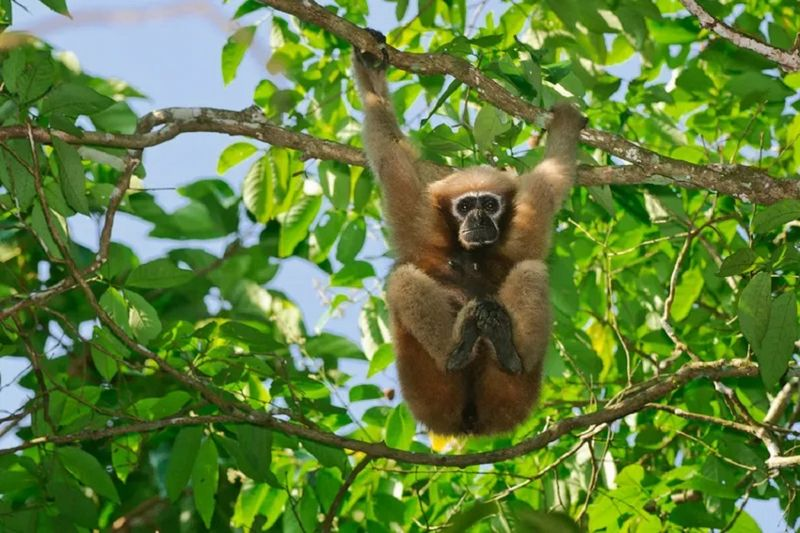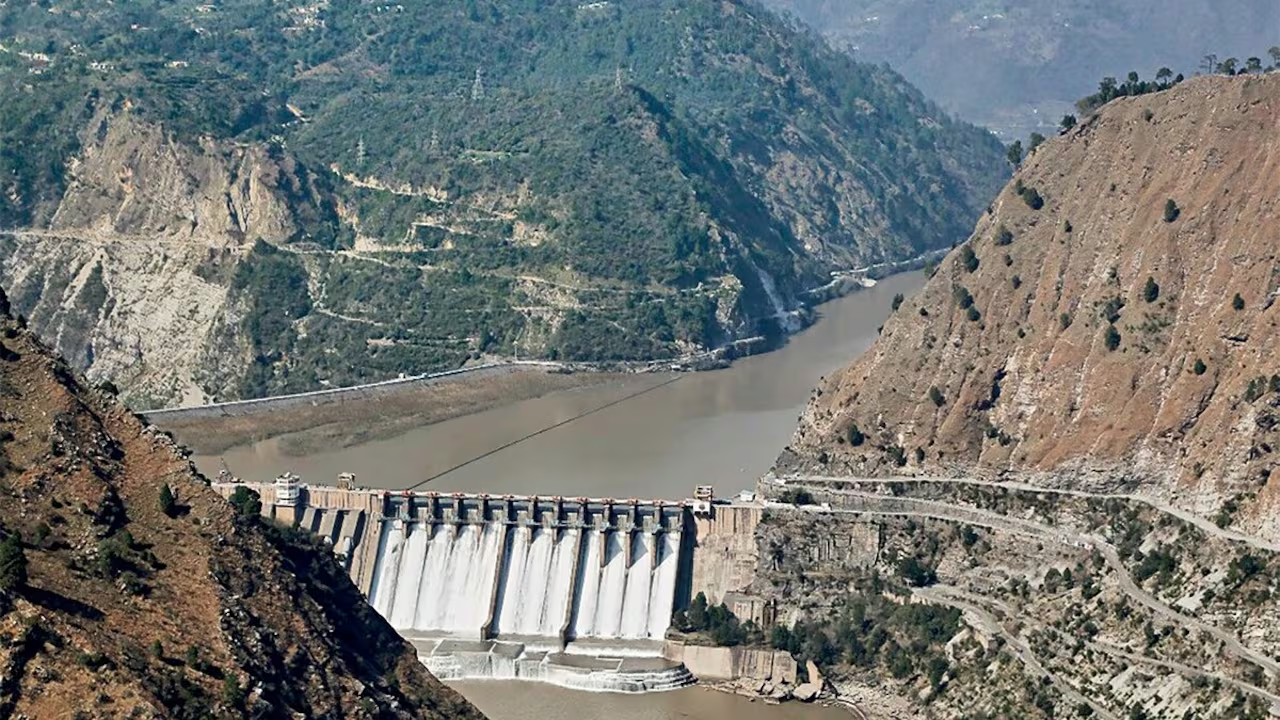- Courses
- GS Full Course 1 Year
- GS Full Course 2 Year
- GS Full Course 3 Year
- GS Full Course Till Selection
- Answer Alpha: Mains 2025 Mentorship
- MEP (Mains Enrichment Programme) Data, Facts
- Essay Target – 150+ Marks
- Online Program
- GS Recorded Course
- Polity
- Geography
- Economy
- Ancient, Medieval and Art & Culture AMAC
- Modern India, Post Independence & World History
- Environment
- Governance
- Science & Technology
- International Relations and Internal Security
- Disaster Management
- Ethics
- NCERT Current Affairs
- Indian Society and Social Issue
- NCERT- Science and Technology
- NCERT - Geography
- NCERT - Ancient History
- NCERT- World History
- NCERT Modern History
- CSAT
- 5 LAYERED ARJUNA Mentorship
- Public Administration Optional
- ABOUT US
- OUR TOPPERS
- TEST SERIES
- FREE STUDY MATERIAL
- VIDEOS
- CONTACT US
Oil and Gas Exploration Threatens Hoolock Gibbon Habitat in Assam
Oil and Gas Exploration Threatens Hoolock Gibbon Habitat in Assam

Introduction: The Union environment ministry's approval for exploratory oil and gas drilling in parts of Assam has raised concerns about the potential impact on the endangered hoolock gibbon. This decision highlights the delicate balance between economic development and environmental conservation.
Key Points:
Approval for Drilling:
- The Union environment ministry has approved exploratory oil and gas drilling in parts of Assam.
- Cairn India, a subsidiary of Vedanta Ltd, seeks to use approximately 4.5 hectares of reserved forest land for drilling within the eco-sensitive zone of the Hoollongapar Gibbon Wildlife Sanctuary.
Impact on Wildlife:
- The area proposed for drilling is home to hoolock gibbons, elephants, and leopards.
- Experts warn that even small disruptions to the forest canopy can be harmful to these animals, particularly the hoolock gibbons, which are canopy dwellers.
- The Forest Advisory Committee (FAC) has deferred its decision and asked for comments from wildlife authorities and a wildlife conservation plan.
Conditions for Approval:
- The regional office of the Union environment ministry has approved the project with certain conditions.
- These conditions include strict compliance with safety procedures and obtaining consent from the National Board of Wildlife.
- Special measures to prevent landslides and erosion have also been recommended.
Previous Incidents:
- The Baghjan oilfield gas blow-out in May 2020 caused extensive ecological damage, highlighting the risks associated with oil and gas exploration.
- The incident led to significant damage to local ecology, including the Dibru Saikhowa National Park and the Maguri-Motapung wetlands.
Conservation Status:
- The hoolock gibbon is listed as "endangered" by the International Union for Conservation of Nature (IUCN).
- The total population in northeastern India is estimated to be over 12,000, with around 2,000 in Assam.
Rejection of Other Proposals:
- The FAC has rejected Oil India Ltd's proposal for extended reach drilling in the Dibru Saikhowa National Park.
- The rejection is based on a Supreme Court order that prohibits mining within national parks and wildlife sanctuaries.
Other Exploration Plans:
- Cairn India has also applied for forest clearance for oil and gas exploration in the Namphai reserved forest.
- This area is within the Dihing Patkai Elephant Reserve and near the Kotha Elephant Corridor.
- The FAC has recommended "in principle" approval with conditions, including the preparation of a wildlife conservation plan focusing on human-elephant conflict.
Key Facts About the Hoolock Gibbon:
About:
- Gibbons are the smallest and fastest apes, living in Asia's tropical and subtropical forests.
- The hoolock gibbon is unique to India's northeast, with an estimated population of 12,000.
- All 20 gibbon species are at high risk of extinction due to declining populations and habitat loss.
Species in India:
- Two distinct hoolock gibbon species are found in India: the eastern hoolock gibbon (Hoolock leuconedys) and the western hoolock gibbon (Hoolock hoolock).
- A 2021 study by the Centre for Cellular and Molecular Biology (CCMB) concluded that there is only one species of ape in India.
Conservation:
- The species is protected under Schedule 1 of the Indian (Wildlife) Protection Act 1972.
- The Government of Assam upgraded the Hoollongapar Reserve Forest to a Gibbon Wildlife Sanctuary in 1997.
Key Facts About the Hoollongapar Gibbon Wildlife Sanctuary:
Establishment:
- Established and renamed in 1997, this sanctuary is crucial for its unique biodiversity.
- Renowned as the sole habitat for gibbons in India.
Flora:
- Upper Canopy: Dominated by the Hollong tree (Dipterocarpus macrocarpus).
- Middle Canopy: Characterized by the Nahar tree.
- Lower Canopy: Features a variety of evergreen shrubs and herbs.
Fauna:
- Hoolock Gibbons and Bengal Slow Loris.
- Other Primates: Stump-tailed macaque, northern pig-tailed macaque, eastern Assamese macaque, rhesus macaque, and capped langur.
- Mammals: Indian elephants, tigers, leopards, jungle cats, wild boar, and various civets, squirrels, and other mammals.
Conclusion:
The approval for oil and gas exploration in Assam underscores the ongoing tension between economic development and environmental conservation. While the project promises economic benefits, it also poses significant risks to the endangered hoolock gibbon and other wildlife. The decision highlights the need for stringent environmental safeguards and comprehensive wildlife conservation plans to mitigate the potential impacts. It is crucial for stakeholders to strike a balance that ensures both sustainable development and the protection of biodiversity. The rejection of extended reach drilling in the Dibru Saikhowa National Park sets a precedent for prioritizing environmental conservation in sensitive ecological zones.




